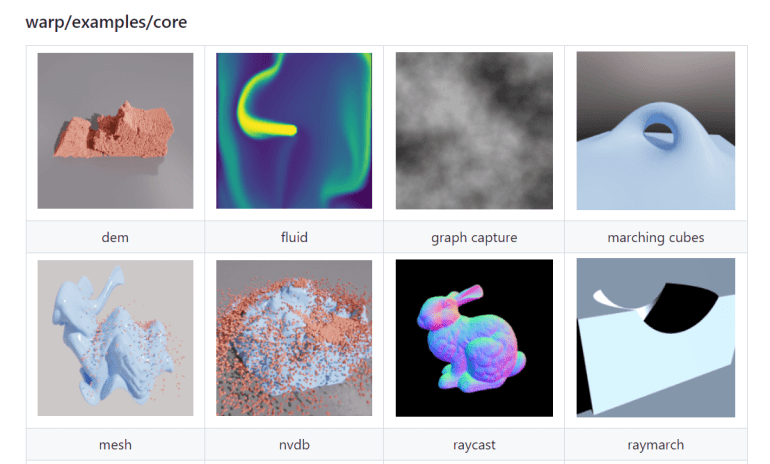- Challenges in creating efficient computer graphics and simulations highlighted.
- Introduction of Warp, a Python framework simplifying high-performance GPU coding.
- Abstracts complexities of GPU programming, focusing on application-specific logic.
- Supports diverse mathematical operations crucial for simulations and graphics.
- Optimizes GPU utilization for enhanced performance without extensive developer intervention.
Main AI News:
In the fast-paced realm of computer graphics and simulation, achieving speed and efficiency is paramount. Developers often grapple with the challenge of crafting high-performance simulations that seamlessly operate across diverse hardware configurations. Conventional approaches, while reliable, frequently falter in fully harnessing the capabilities of modern graphics processing units (GPUs), creating bottlenecks in applications requiring real-time feedback, such as video games, virtual reality environments, and scientific simulations.
Addressing this challenge are frameworks like CUDA and OpenCL, which facilitate general-purpose computing on GPUs. However, these frameworks demand a deep understanding of hardware nuances and may not optimize performance for specific application needs, thereby limiting their effectiveness.
Enter Warp: a pioneering Python framework engineered to streamline high-performance GPU coding. Designed to democratize GPU programming, Warp abstracts away the intricacies of GPU architecture, empowering developers regardless of their prior GPU expertise. By simplifying the coding process, Warp enables developers to concentrate on application-specific logic without the burden of low-level GPU intricacies.
Warp achieves this through an intuitive interface tailored for GPU programming, supporting a comprehensive suite of mathematical operations and functions pivotal in simulations and graphics programming. Engineered for efficiency, Warp maximizes GPU potential, ensuring programs achieve peak performance without exhaustive developer optimizations.
Central to Warp’s prowess is its exceptional performance metrics. Applications developed with Warp exhibit significantly enhanced speed compared to traditional methods, particularly in parallelizable tasks. Moreover, Warp demonstrates robust scalability, efficiently leveraging multiple GPUs to further boost performance. Notably, Warp’s user-friendly design fosters expedited development cycles, allowing developers to prioritize application refinement over code optimization.
Conclusion:
In the competitive landscape of computer graphics and simulation, the introduction of Warp represents a significant advancement. By democratizing GPU programming and optimizing performance through streamlined coding, Warp not only enhances development efficiency but also sets a new standard for achieving peak performance in GPU-driven applications. This innovation is poised to reshape market dynamics by enabling faster development cycles and unlocking the full potential of modern graphics processing units across various industries.

